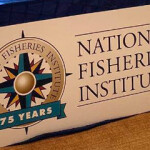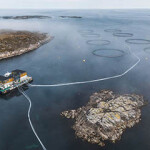New guide to help evaluate marine protected areas

A new “MPA Guide,” resulting from a collaboration of 42 authors led by Kirsten Grorud-Colvert of Oregon State University, aims to facilitate communication and common understanding about marine protected areas.
The guide was introduced in a paper in the 10 September issue of Science magazine, "The MPA Guide: A framework to achieve global goals for the ocean." In it, the authors review the consistency, of MPAs and propose a framework by which levels of protection can be evaluated and improved.
Marine protected areas (MPAs) are increasingly being used as a conservation tool, for enhancing marine biodiversity, and for promoting sustainable fisheries. However, the definition of an MPA is vague, making it hard to gauge actual conservation progress. Some MPA’s allow no extraction of resources, while others allow significant extraction. Some MPAs exist in the water, while others only exist on paper, with no active management. The differences among MPAs can lead to controversies about the effectiveness of the conservation effort.
Protected Planet, which disseminates data on MPAs, has reported that 7.72 percent of the ocean, or nearly 28 million square kilometers, is covered by 17,861 marine protected areas. Yet another source, the Marine Protection Institute’s Marine Protection Atlas, shows that only 2.7 percent is fully or highly protected from fishing impacts.
The International Union for Conservation of Nature (IUCN), which was also involved in the development of the new guide, has worked with the U.N. Environment Program World Conservation Monitoring Centre (UN-WCMC) to produce the World Database on Protected Areas, which is the most comprehensive global database on terrestrial and marine protected areas. It has also already developed the “IUCN Protected Area Categories for management objectives and governance types.”
The new MPA Guide is meant to compliment this work by including four elements: “Stages of Establishment” specifies an MPA’s status – whether it only exists on paper or is in operation; “Levels of Protection” clarifies the degree to which biodiversity is protected from extractive or destructive activities; “Enabling Conditions” provides the principles and processes needed to plan, design and govern a successful MPA; “Outcomes” describes the conservation and social results that can be expected from an MPA at a particular stage and level, provided the enabling conditions are in place.
National trials are already underway in France, Indonesia, and the U.S., where MPA experts are using the guide to analyze and categorize existing MPAs so that communities and governments can make informed decisions.
In an online discussion held on 9 September to promote the guide, Kirsten Grorud-Colvert said, “The guide is not a campaign. It doesn’t advocate for a specific type of MPA.”
According to Estradivari Sant, a researcher and doctoral candidate at Leibniz Center for Tropical Marine Research – who was involved in using the guide to classify MPAs in Indonesia, where most MPAs provide only light levels of protection and few are actively managed – the guide’s objective approach is part of its strength.
“What we like about the MPA Guide is that it makes no judgement on desired or appropriate conservation intervention, which must be adapted as to appropriateness for the local context and national priorities,” Sant said. “Instead, it is a tool for evaluating, celebrating, and supporting steady improvement in MPAs.”
Photo courtesy of Grobler du Preez/Shutterstock






Share